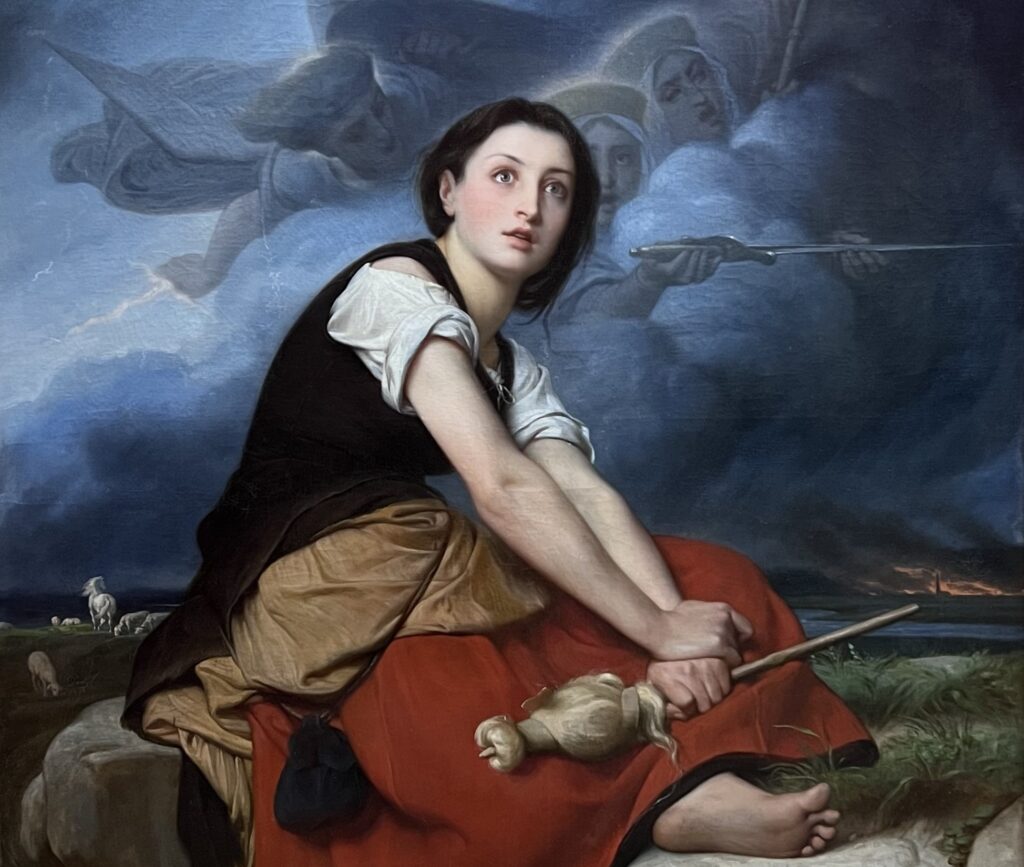
In the “Translator’s Preface” of Mark Twain’s biography of Joan of Arc, we read these words:
“To arrive at a just estimate of a renowned man’s character one must judge it by the standards of his time, not ours. Judged by the standards of one century, the noblest characters of an earlier one lose much of their luster; judged by the standards of today, there is probably no illustrious man of four or five centuries ago whose character could meet the test at all points. But the character of Joan of Arc is unique. It can be measured by the standards of all times without misgiving or apprehension as to the result. Judged by any of them, it is still flawless, it is still ideally perfect; it still occupies the loftiest place possible to human attainment, a loftier one than has been reached by any other mere mortal.”
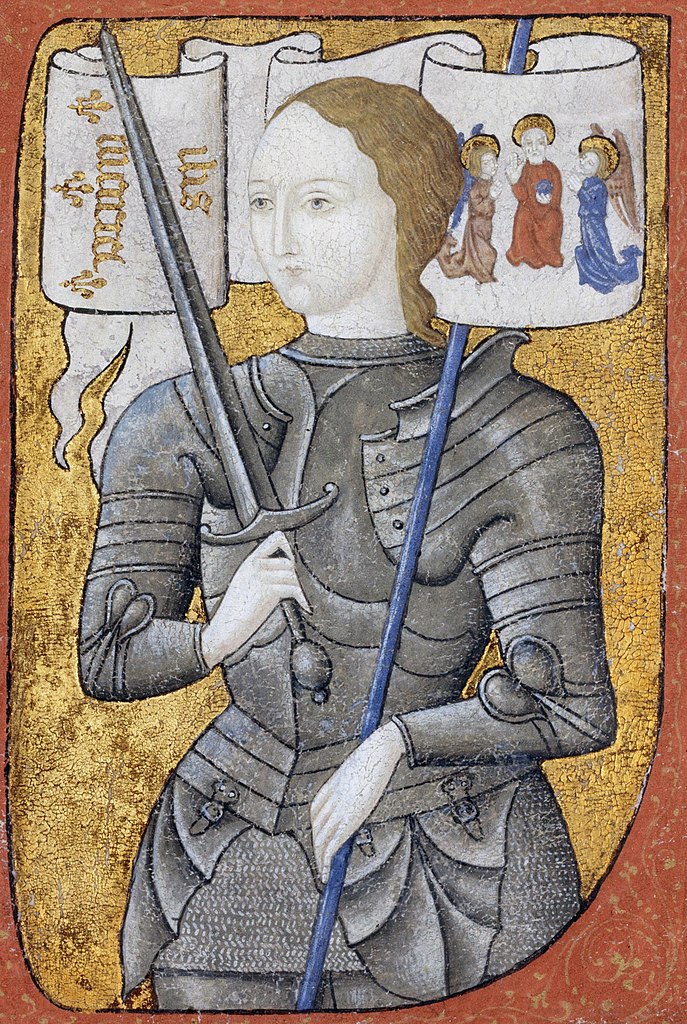
The Saint’s legacy is still felt in France (even if she is almost forgotten in the United States). Nowhere is this more true than in Rouen, the place of her martyrdom. A tall cross in the Old Market Square beside a church dedicated to her life marks her martyr’s pyre. The city hosts museums, monuments, exhibitions, festivals, street names, and works of art in her honor. Having recently come to revere her as a spiritual heroine made our visit to Rouen particularly special.
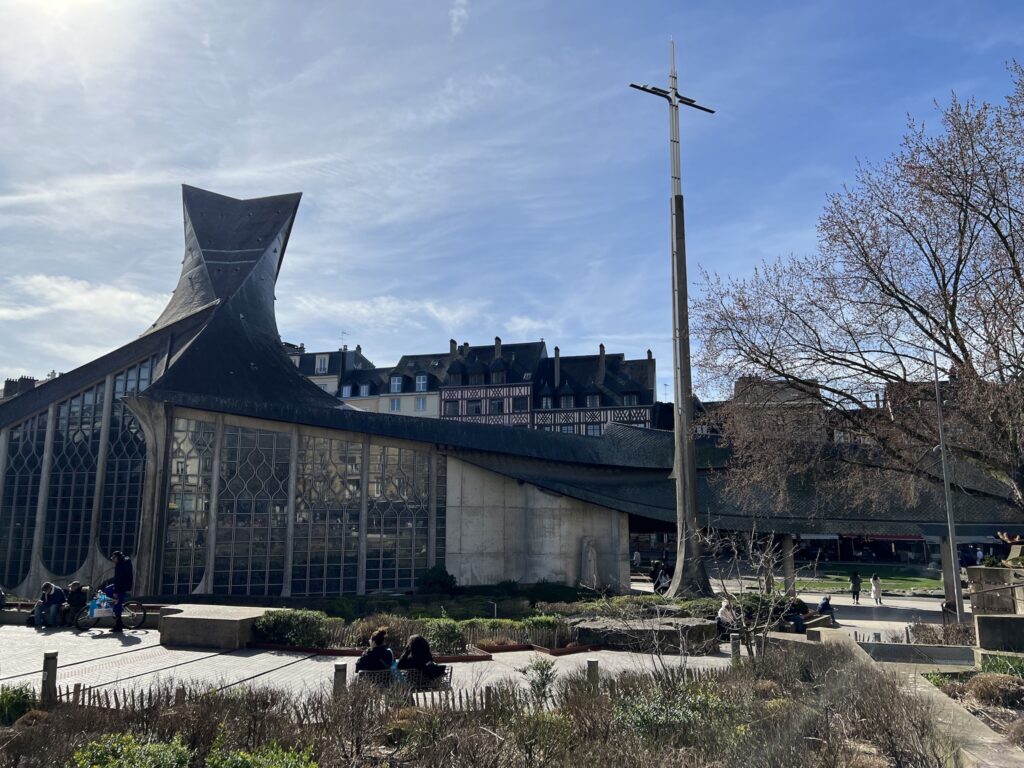
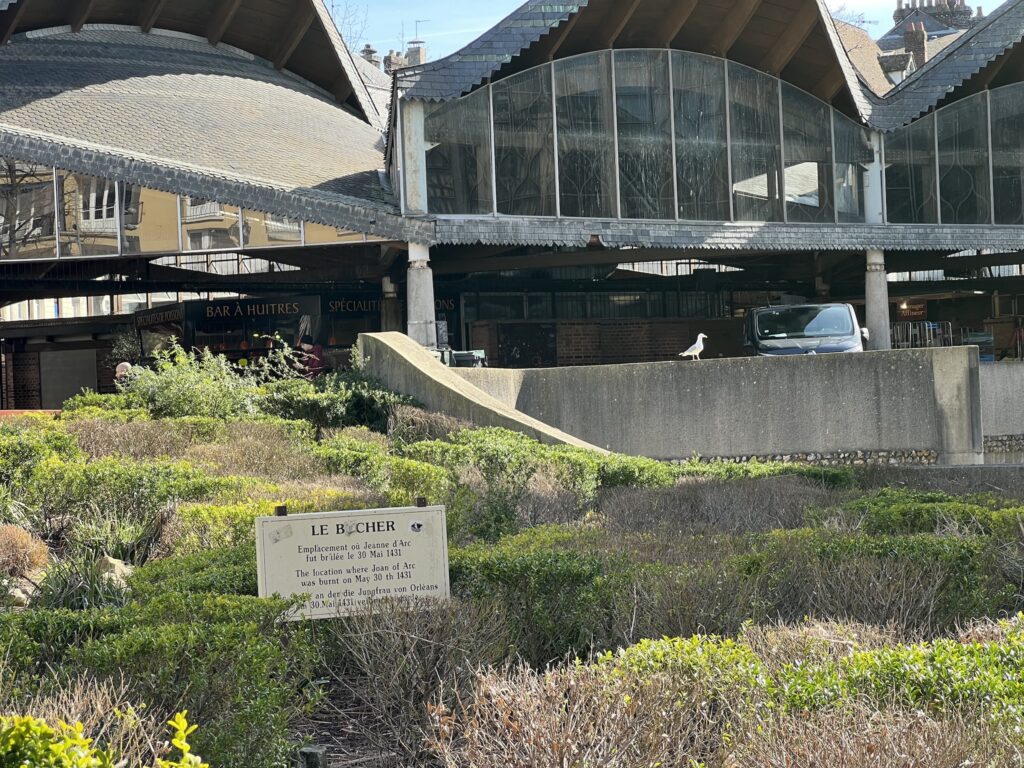
Rouen’s Museum of Fine Arts has several art pieces depicting La Pucelle’s (the Maid’s) life, suffering, and death.
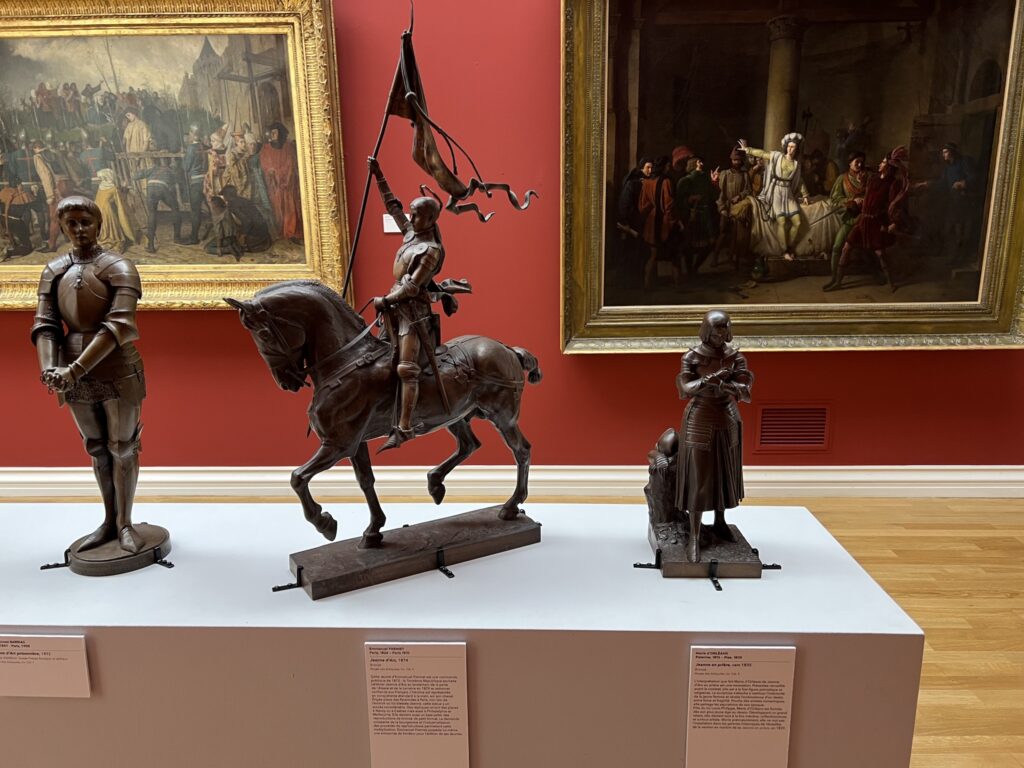
Joan was treated with unusual cruelty for a woman of that time. She was not allowed to be imprisoned with other women and had to suffer with predatory men guarding her day and night; that may explain her insistence on wearing men’s clothing while captive.
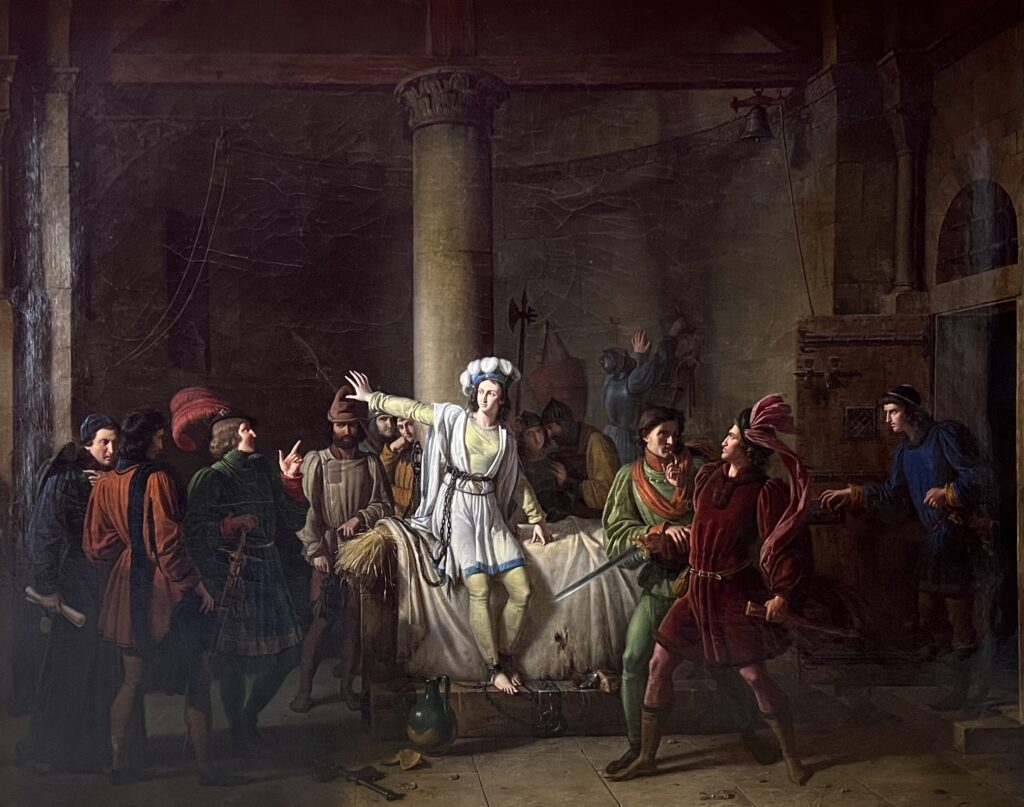
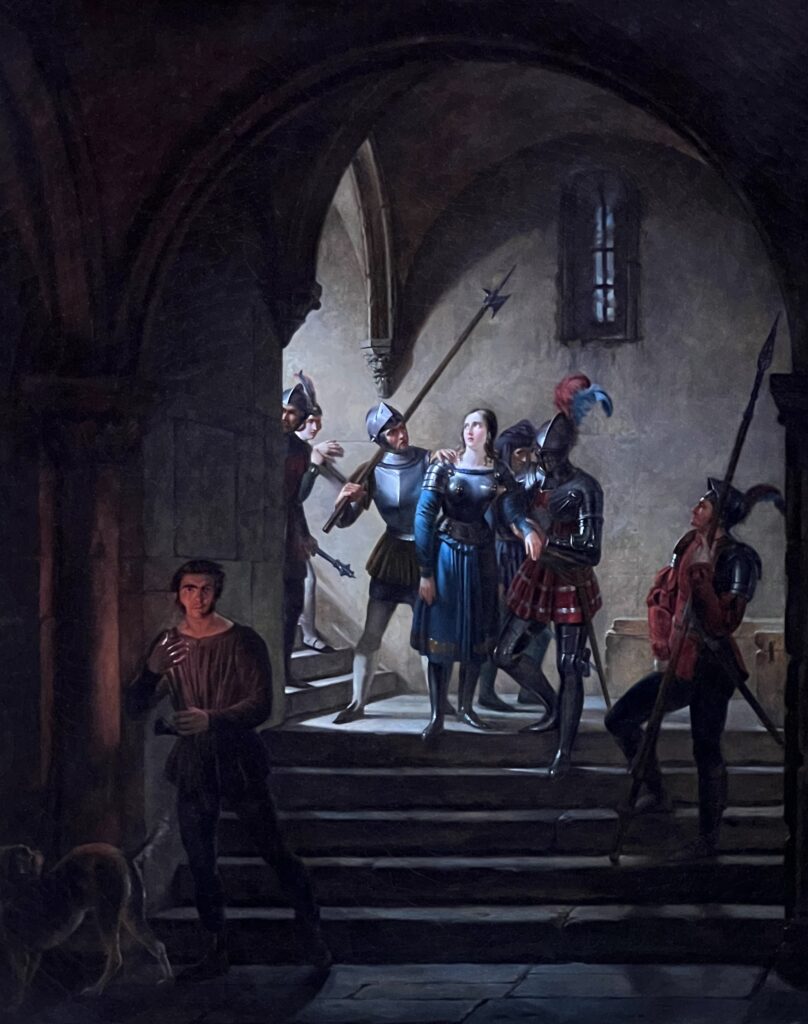
Her relentless, brutal, and callous interlocutor, Bishop Cauchon, was unafraid to use corrupt means to effect her condemnation and demise. He was even able to forcibly extract an admission of guilt from the weary and ailing teenager, which she promptly renounced once she regained her presence of mind.
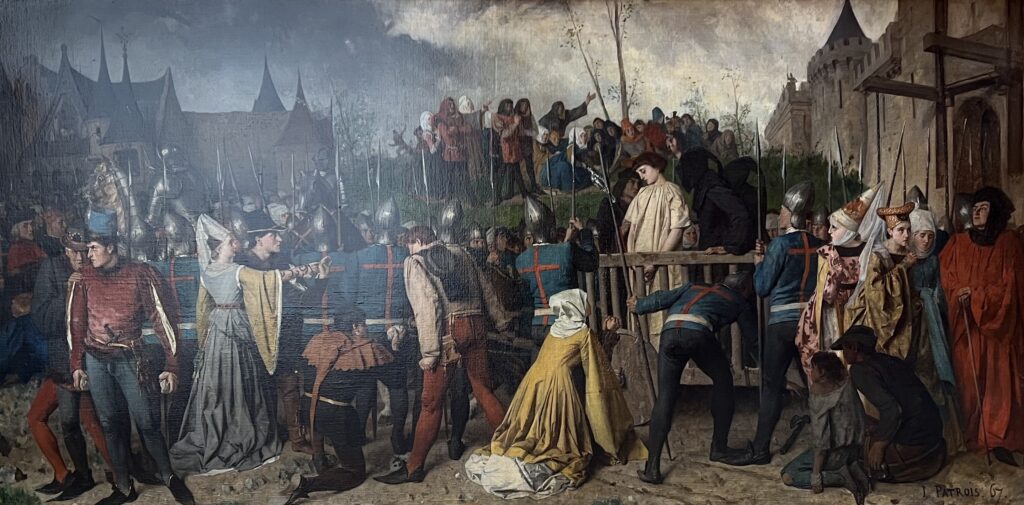
A couple of decades after Joan’s martyrdom, the French expelled the English from France. The political situation demanded a re-examination of Joan’s condemnation, and it was determined after a thorough investigation that her judgment as a heretic was arbitrary and that she was a political prisoner unjustly executed. The verdict of her rehabilitation trial was announced in Rouen at Saint-Ouen Abbey with Joan’s family in attendance.
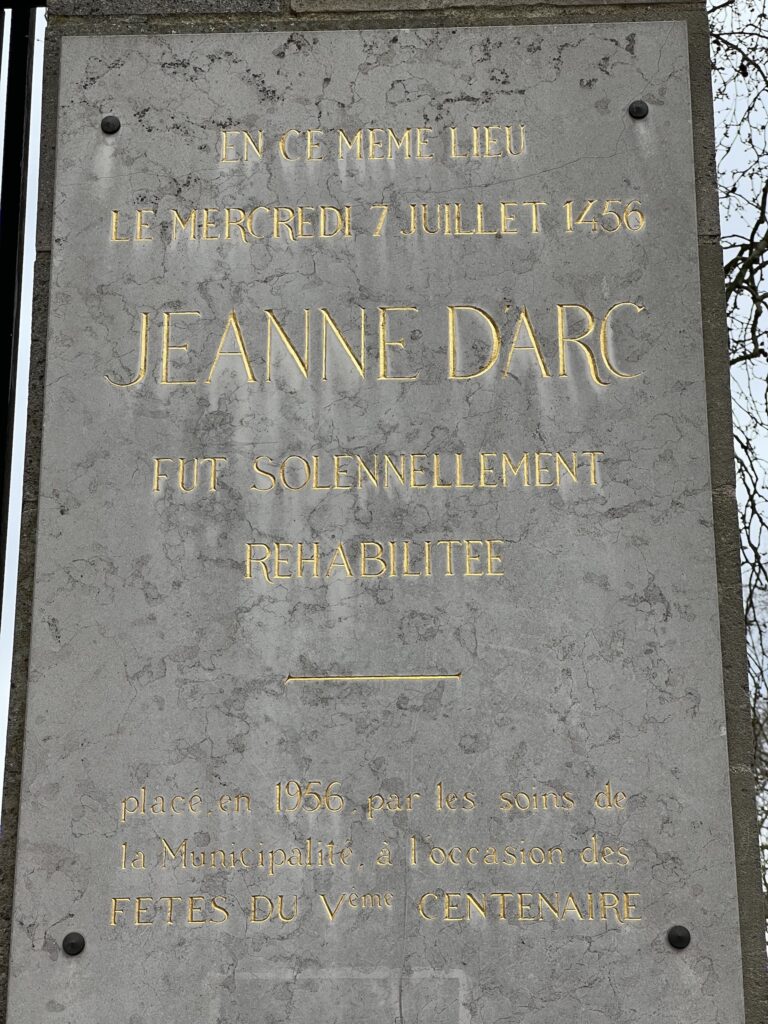
Index of blog posts for our Cathedral Pilgrimage
- 1. A Cathedral Pilgrimage
- 2. Preparing for a Pilgrimage
- 3. First Stop – Reims
- 4. Reims – City of Kings
- 5. Saint Remi and His Basilica
- 6. Christian Time Traveling
- 7. Second Stop – Laon
- 8. Cathédrale Notre-Dame de Laon
- 9. Third Stop – Amiens
- 10. Amiens Cathedral: Almost Heaven
- 11. Soaring Vaults and Great Treasures
- 12. Enchanted Chanting
- 13. Amiens: A City of History, Art, and Culture
- 14. Fourth Stop – Beauvais
- 15. Fifth Stop – Rouen
- 16. Cathédrale Notre-Dame de Rouen
- 17. 3:10 to Gothic
- 18. Joan’s Triumph
- 19. Rouen Treasures
- 20. Cathédrale Notre-Dame de Chartres
- 21. Chartres Cathedral: A Pilgrimage Through Time and Light
- 22. Chartres’s Facade: Functional Beauty